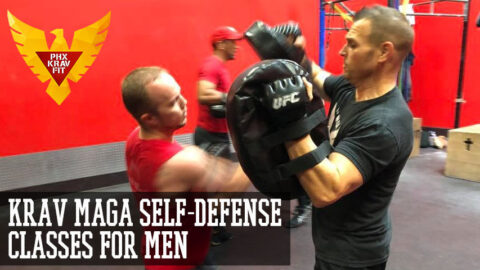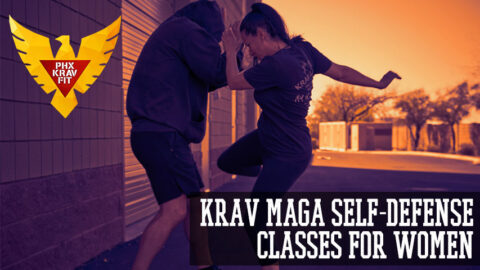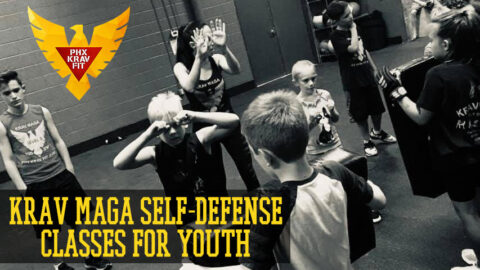The Ultimate Student Guide for Self Defense
In today's world, the martial arts have taken on many forms, and tend to confuse much of the outside world by similar labeling. Many styles, arts, philosophies, and systems have no business with the label: self defense. Those not familiar to the martial arts world, think that pronouncing a certain art is the primary obstacle. Unfortunately, there is much more.
Learning about anything new has many challenges.
Whether it is learning a new computer program, or a foreign language. The challenge with martial arts is that many people package all forms of martial arts under the same category of "self defense". Those new to martial arts do not notice that martial art "A" may be totally different in comparison to martial art "B". From their perspective, they believe that "A" and "B" are the same. That is as absurd as saying that the languages of French and Chinese are the same, or even similar. The most important distinction that everyone must make, is that many arts have a different outcome. Meaning that they have a different focus area, goal, and set of results.

Is this the novice's fault, for not naturally knowing these differences?
Sometimes it is, by not researching what DVD they're buying, art they are studying, or lessons they're about to sign a one year contract to. However, the real problem comes from the instructors and teachers of the martial arts world. They are the people who many times confuse the outside world by what they are trying to sell, what they have been taught, or by their own pride.
In order to attempt to get everyone on the same page, there are seven main categories of martial arts:
- Traditional Martial Arts
- Meditation Martial Arts
- Exercise Martial Arts
- Competition (Point) Martial Arts
- Competition (No Rules) Martial Arts
- Sport Martial Arts
- True Self Defense Martial Arts
Separating arts into these seven categories will help instructors teach their knowledge, business owners meet their customers' needs, competitors train properly, students understand the differences, and "outsiders" see that all arts are not "karate".
The first category is Traditional Martial Arts.
Basing itself on culture, lineage, respect, and structure, these arts focus on old practices dating back hundreds, sometimes thousands of years ago. Still, these arts dominate the business of martial arts, as its benefits are shown through the values and morals they teach. At the same time, students learn about the history and culture of the art. These arts are truly beautiful, and present an excellent foundation for beginners, and those interested in the art's origin.
Meditation martial arts is the second category.
This category also uses many traditional concepts to increase concentration, reduce stress, and produce other physical benefits. Today's Western medicine culture is becoming increasingly interested in some of the methods and principles relating to the mind-body connection. These arts are now used and endorsed by researchers, physicians, and of course, Hollywood. These arts create way to gain balance, and strengthen inner health.
Exercise Martial Arts are next.
This category first gained momentum by "aerobic kick boxing" classes in the early 90's, then was revolutionized by Mr. Billy Blanks in the late 90's. Exercise Martial Arts use a number of tools, mostly taken from "kick boxing range", as kicks, punches, and various footwork movements. These classes are a great way to increase cardiovascular captivity, in addition to adding another way to get fit. Use these arts and break a sweat like you never have before.
Competition Martial Arts is the fourth category, where these combative arts use points rendered from proper techniques and demonstrations of techniques.
Many of these arts come from the traditional side, and include a lot of structure and forms, hence sharing many benefits of the Traditional category. Some Competition (Point) Arts claim to be self defense focused, but learned a lesson when attempting to enter the "no rules tournament" arena. Bottom Line: Arts in this category are a competitive step for those who love Traditional Arts. Competition ("No Rules") Martial Arts, although these have always been around in some form, arts in this category saw its peak start and continue through the late 1990's. The UFC's and Pride events continue to change the perception of martial arts, and help people gain a wider perspective into this "no holds barred" world. The only challenge with this category comes when self defense practitioners realize that there are rules to these "no rules" tournaments. These arts create the ultimate step for the Martial Art sportspersons.
“Sports Martial Arts” may be confusing as these competitive art categories might be easy however, think of this category as a happy medium between the last two.
This does not mean that the last two categories are not sports, but the arts that fall in this category separate themselves by actually being a combination of the last two. Once again, it is a mixture that forces them to create a new category. They may be combative as "No Rules" competitions, but they also have stricter rules as point competitions (i.e. they stay in one range, can only use limited tools, points may help determine the winner, etc.). Needless to say, these are perfect for practioners who want to specialize in a certain range.
True Street Fighting Martial Arts Self Defense is always fighting for its piece of the pie.
However, these arts have few commercial outlets in the form of actual schools. The challenge that this category faces is determining which art is more "realistic" and effective than the others. Although this category is claimed by a couple of old philosophies, it is also overflowing with "flavor of the month" fighting systems. One overriding necessity is that these arts must be able to adapt to all ranges and possibilities (i.e. empty hands, ground fighting, weapons, and mass attack). The bottom line is to research, train, experiment, judge. It's the only way to find the truth. Those in search of true self defense should apply here.
Before one races out and buys a DVD, signs up for classes, or dedicates any time what so ever, they must first know what is their outcome. In other words, what is wanted from participating in the martial arts? Health, trophies, weight loss, true self defense, or knowledge of a different culture? Only you, the student, can answer that question. Write down what you really want, then prioritize your top one or two answers. After this is done, compare your wants and needs, to the descriptions of the categories.
One of the biggest misconceptions that can be taken from this article is that there is absolutely no crossover between these categories. Please understand that there is at least a hint of something in everything. There are self defense moves in all of the categories, just as most arts could be turned into a cardio workout. The point is that each category (or art) has specific strengths, that make it more proficient in sports, exercise, true self defense, etc. The deciding factor comes through four questions of assessment:
- What was the reason for the arts creation or beginning?
- Knowing what it was created for, is it still useful given today's standards?
- Does the art have limitations (rules, ranges not covered, etc.), and do these limitations help categorize it?
- What does the use of the art produce foremost, or where can it best be used (ring, street, fitness program)?
By using the previous information many arts that claim to be self defense, would not just realize they're not "True Self Defense" arts, but actually realize their strengths by using these questions. Unfortunately, the business of self defense drives owners and instructors is to incorrectly package it all as "self defense". Everyone would benefit more if owners and instructors would at least be more specific in the labels they use. For more information, you can visit our Women's Self Defense Classes, Men's Self Defense Classes and Youth Self Defense Classes.



